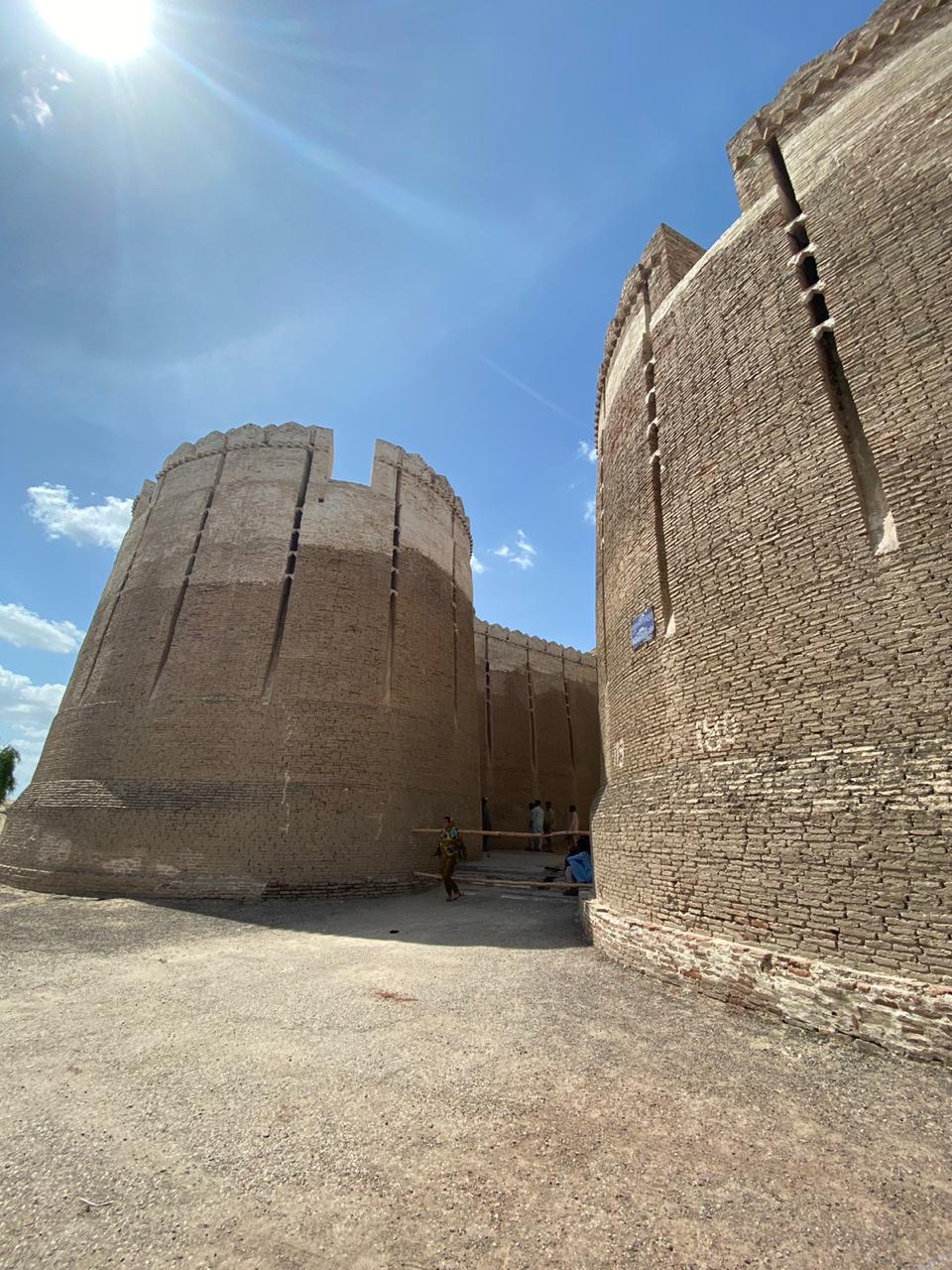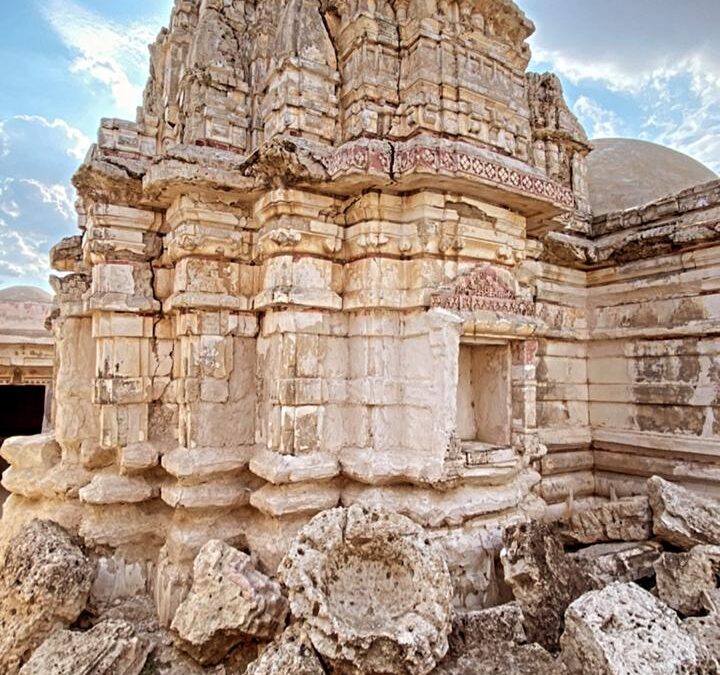It was the mesmerizing beauty of Winder-mere that enabled William Wordsworth to pen down some of his most amazing poems, still important to English Literature. Or maybe it was the Beauty of the intricacies of craftsmanship that encouraged Amir Khusrau to deliver his famous lines:
“Agar firdaus bar ru-yi zamin ast, Hamin ast, O Hamin ast, O Hamin ast”
( If there be a paradise on earth, its here, it’s here, it’s here), on the north and south walls of Diwane Khas inside the Lal Kila (Red Fort) in Delhi. I can feel and understand the effect the depths of a place had on the souls of these famous poets, as the beauty of Thar inculcates the same emotions in many. I can go on and on describing the beauty this infertile yet diverse land has on one’s mind and soul.
A barren desert scarce of water to many, a place to visit when it rains as it adorns a beautiful green cover after the monsoons, which attracts visitors to its famous Karoonjhar Hills. What many don’t know is the beauty it holds in the simplicity and vastness of its desert and the people inhabiting it, the abundance of naturals resources including granite and coal, its rich cultural diversity, and the smooth projection of inter faith harmony. Most importantly being historically rich, is the attribute that shines like a jewel in the crown, an important seat for ancient Jain and Hindu religions, A Hide and seek passageway for Mughal kings, Emperor Humayun to start with being chased by Sher Shah Suri and as a pathway to reach up till Multan and Kabul by many more Mughal kings to follow, the
Birthplace of Emperor Akbar, the beautiful land assigned to the famous folklore of Umer and Marvi, the never-ending tales of history this land holds apart from the beauty it clutches, a sight for sore eyes, holding deep conversations with the soul. Therefore, I decided to embark on a journey to explore the historical and cultural side of this desert.
Gori Madir:
Starting the journey to explore an important historical aspect this region is famous for, its Ancient Jain Temples. Some 90 km away from Mithi, a few km off the Mithi/ Islamkot road is the famous Jain temple called Gori mandir. The temple symbolizes Parasnath, the 24th Tirthankara of the Jain religion. Built in 1376 h, during the reign of Sodha rulers over this region. A masterpiece by itself, still holding on to the remnants of its past yet plundered glory, a typical example of Jain architecture, with intricately carved pillars, columns, brackets and moldings, and small chambers on all sides, depicting images of deities, representing the 24 Tirthankaras.
An important pilgrimage site for Jains, covering an area of 125 by 50 feet. Built-in stone, similar to marble, believed to have been bought from Jodhpur. The measurements, and accurately spaced columns, with fine stone carvings, can be regarded as the finest works of craftsmanship. Legends have it, that this temple contained an image of Jain Tirthankara; Parasnath made of white marble, 11 feet tall, and studded with diamonds, till 1717 AD. This figurine was removed by Sodha Sutojee, the local chief, to Bakasir fort, where he displayed it to gather proceeds and offerings from devotees. A yearly fair was held, where devotees paid heavy tributes to the Sodhas to pay respects to their God. Later moved to a fortress at Vervah, and exhibited only for those able and willing to pay the chief. The first fair in its honor was at Sooeguam, in Thar in 1764, after some rich Hindu merchants paid hefty amounts to the Sodha chief and moved the image to Marwar. It is also believed that after the defeat and capture of Poojajee Sodha by the Talpurs, and his death in 1832, the annual fairs discontinued as the fallen chief had hidden the image, leaving no clues or traces behind. The temple consists of an underground tunnel, dug by a British Colonel Captain J J Wilson. It has remained an object of partial destruction from arson attacks followed by a Gunpowder blast by Colonel Tyrwhitt, during the Nangar outbreak, to capture a Sodha chief hiding in one of its passages. Its first restoration work carried out in 1715.
Displaying one of the finest examples of breathtaking murals, underneath its main entrance dome, and few faded ones on the domes and moldings of the inner hall, depicting figures and animals and displaying procession, celebration, and worship scenes as people came from far and wide to pay respects to this temple. These murals speak to the audience through their faded glory, conveying the years of merriment and importance, yet remain indecipherable. Similar is the case with its sculptures.
The entrance step made of marble is believed to have been brought from Agra, this leads to the inner hall of the temple. Signs of negligence in terms of conservation techniques are evident on its rock-cut columns and sculptures on pillars. Thick plaster applications as restoration efforts blanketing the details of the finest chisels used, deeming its intricacies hardly discernable. The inner hallway takes you to small passage openings on the right and left, leading to narrow open alleys, which allows a majestic view of the beautiful stone carved temple roof and domes, partly damaged, with its pieces strewn on the ground, with the dust of time engulfing them as their own. Others stacked ruthlessly upon one another. The state of this sight gives evidence of plunder and pillage over time in search of treasure or domination. This temple alone has so much to say to its viewers, seldom boasting about its past glory, yet pleading for its deplorable condition and requesting visitors to help retrieve its splendor.
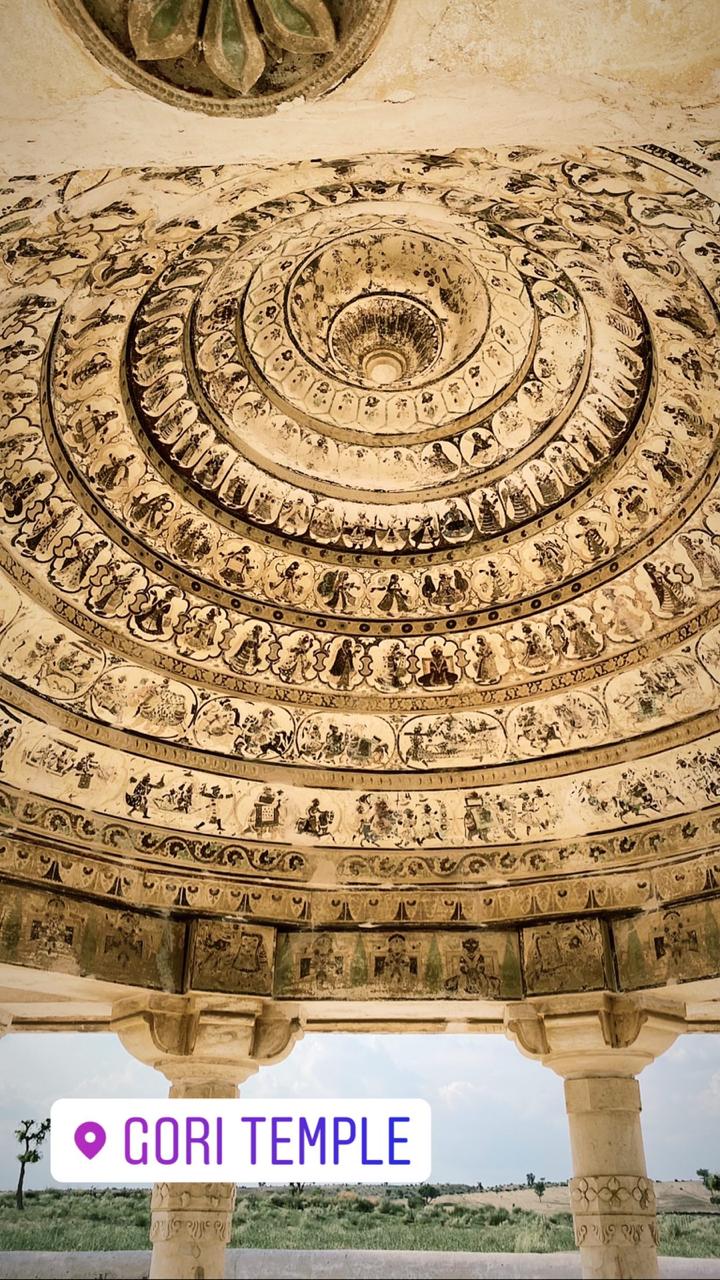
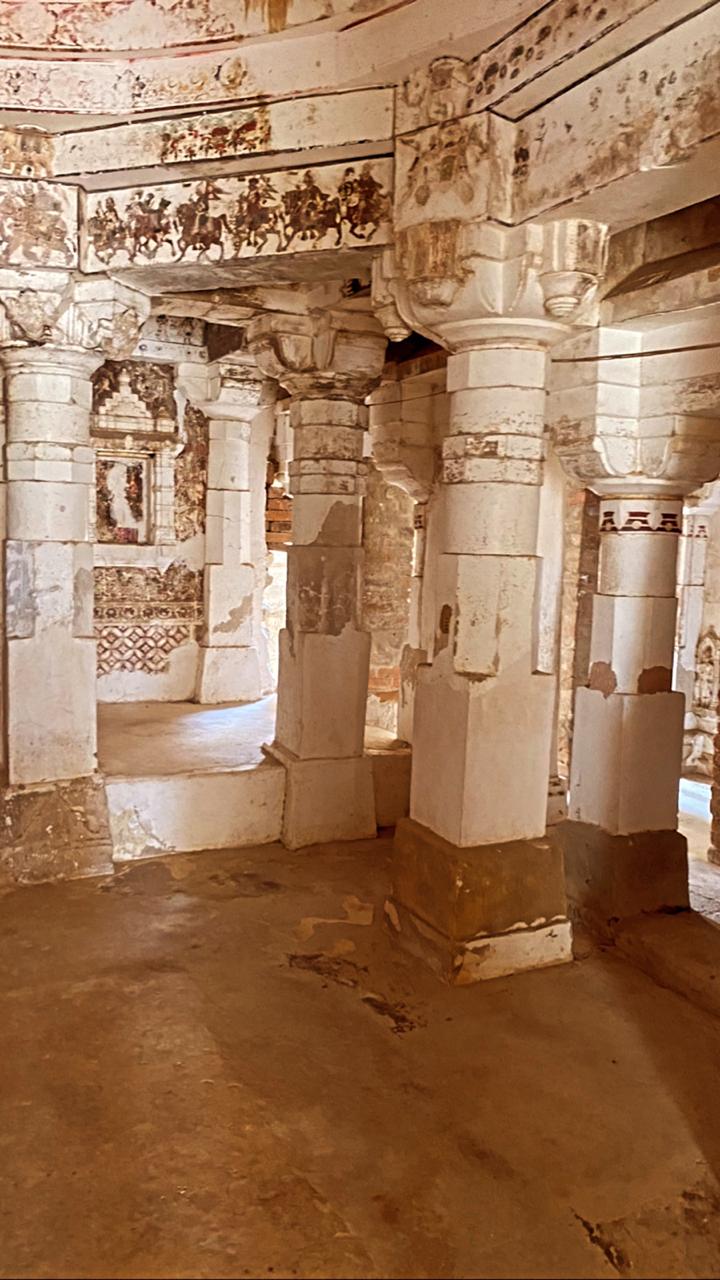
Marvi’s Well:
Not far from Gori Mandar, the next stop was Marvi’s well from the famous folklore of Sindh, one of
the Surs of Shah Abdul Latif Bhittai; Umer- Marvi.
Attributed as one of Shah Bhittais heroines. As the tale goes, she was capsized by Umer
Soomro, then ruling over Umerkot. Smitten by her beauty, he took her into custody from this well, now a tourist site in Thar, while she was drawing water from it for her livestock. Legend has it, that Umer after hearing tales of Marius beauty stopped at this well and requested a drink of water as he thirsty while traveling, his glance fell on Marui, whose beauty capsized him for a few moments. He forcibly caught hold of her and bought her to his palace in Umerkot. Umer would offer her a world of jewels and luxury, did she agree to marry him.
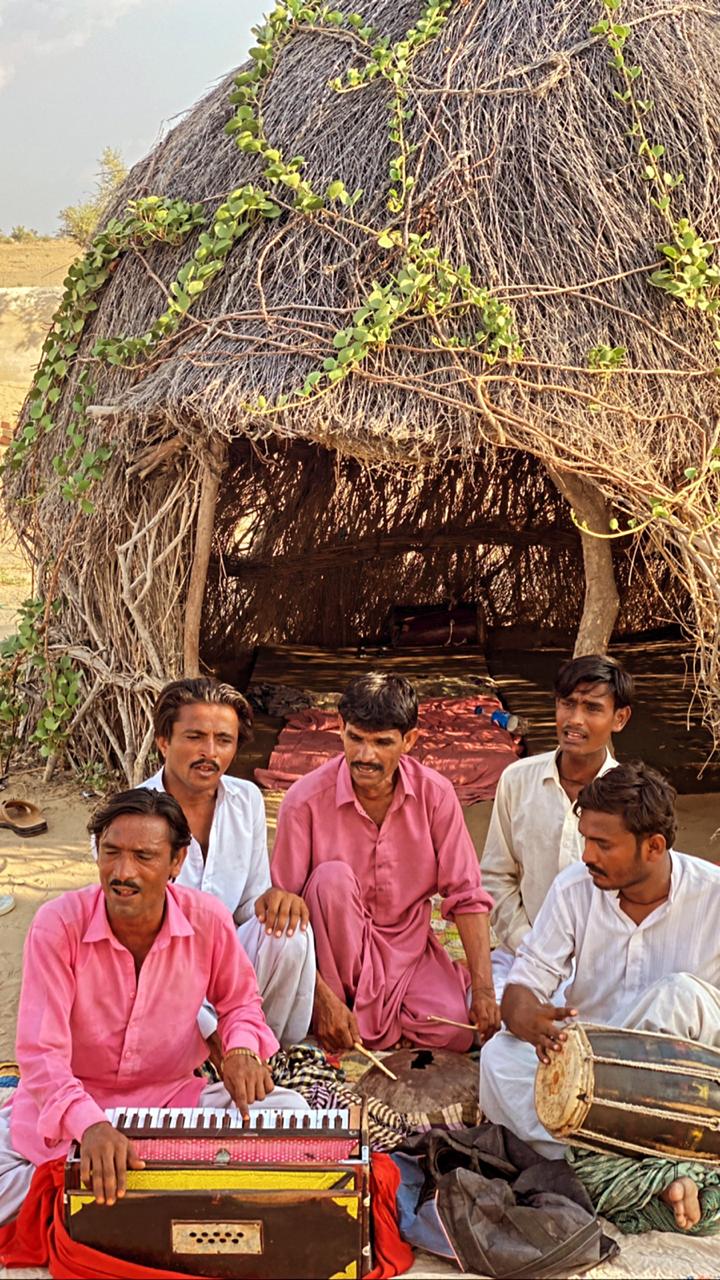
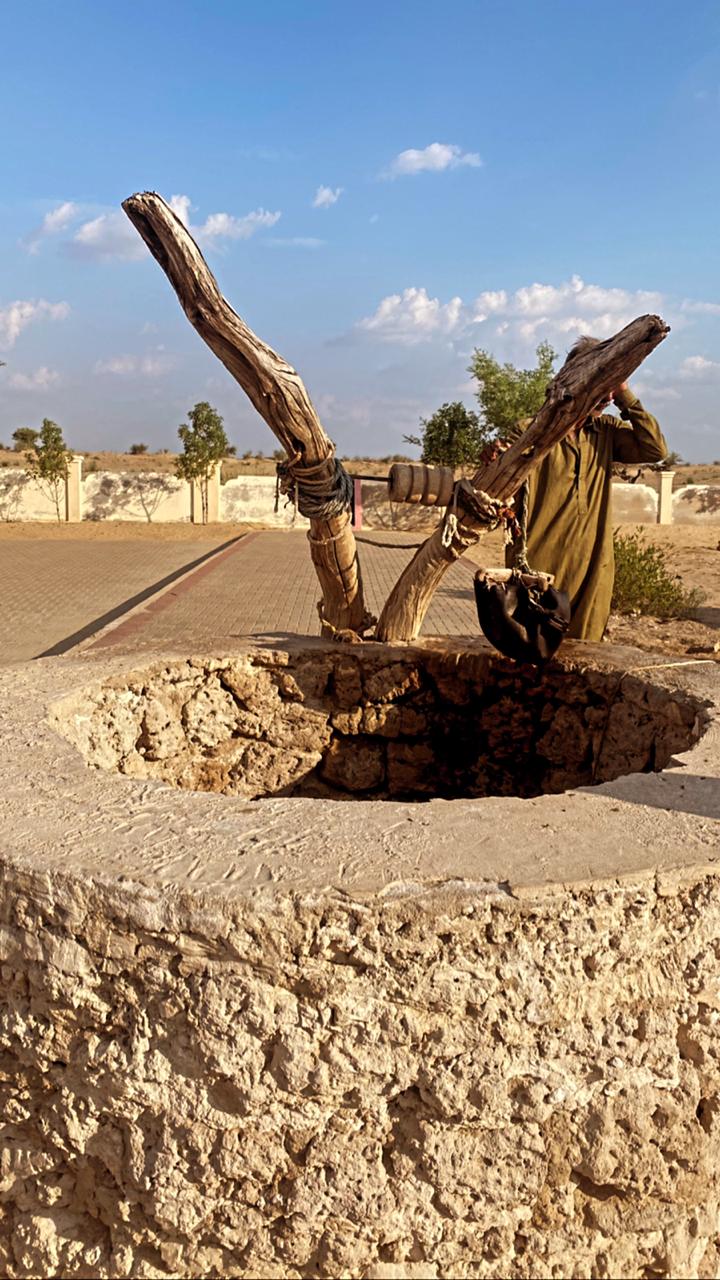
Such was Marui’s patriotism and longing for her home, while in captivity, she continuously pleaded for her release to get back to her homeland and her people; in chains, her face towards the window, she awaited the rising and setting of the sun, passing each moment in grief and misery for the simple life of her homeland. After continuous objections to the Ruler’s proposals, Umer had to finally set her free after a year in captivity.
In contrast to the Gori Mandar, this site seemed well preserved attracting a number of tourists. A small museum displaying the culture of Thar, a group of musicians with their traditional instruments, singing the Raags and Waees of Shah Bhittai, a water drawer close to the well, helping
visitors draw water with immense pride, contribute to the aura this site creates. Those who are aware of this folktale are engulfed with feelings of immense nationalism and loyalty, enhanced by the atmosphere this site promotes. While standing at the well, listening to Marui’s calls through Shah’s verses, touches the depth of one’s soul, helps mentally and emotionally recreating the times Marui was in captivity.
With Marius pleas echoing in the background, paying her our tributes, we said our goodbyes to head to another ancient Jain temple in Viruvah.
Jain Mandir Viruvah:
The temple is built over part of Parinagar (Town) 15 miles from Nangar parkar, inhabited by Jains in the majority was an important port city of the 12 century, now in Ruins. Few historians claim the city was developed in the 5th or 6th century AD and destroyed in the 12th century AD. What appears to have been a large flourishing town, a bustling center, for trade, an arm of Runn of Kutch nearby confirms of it has been a dwelling port city, one can still imagine the movement of boats consisting of merchandise from here. The decline of Parinagar is attributed to the land gaining on the sea and hence ceasing the Runn to be navigable.
This Jain Temple of Viravah made in stone, calls out when one passes through the narrow strip of road, probably one of the few temples, managed to stand over the passing centuries. Withstanding the lapse of ages, confirming its by-gone prosperity.
Consisting of an open group of Pillars with intricately carved capitals and roof. Chiseled marble figures on reliefs, either part of this temple or the foundations of former buildings of Parinangar, around it. Historians claim that among these foundation stones, was one beautifully carved block of marble from the 11 or 12th century, later on, moved to the National Museum of Karachi. Its moldings and columns give evidence of the mastery in the skill of the stone carvers living in and around. Displaying an open area around it, believed to be a ground for Jain Religious festivities and rituals, now a site with overly grown shrubs. The Murals underneath the dome and on the moldings peak through the plaster coats covering them, splashes of plaster used to restore the walls and dome presently inundate the fine carvings on the pillars of the temple.
The figures on columns are beautifully executed and intricately proportioned. According to the claims of Captain Raikes and Giles, from the colonial past, much of its remains were found built into modern temples and houses around. The temple, at present, gives a weary look, most of its murals and carvings of stone vanished with time, or elapsed by repair work.
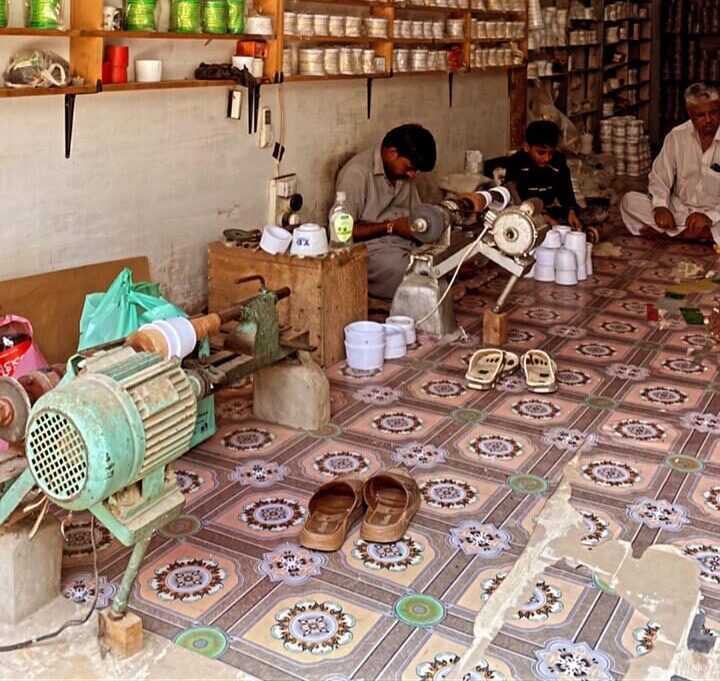
Shahi bazaar
Obsessed by antiquities and inspired by the rich traditional jewelry worn by women of Thar, we set off to a visit to Shahi bazaar. Locals claimed that few jewelers in the bazaar followed the art of traditional jewelry making and housed antiques too. We were able to stumble upon some ancient coins and other items, in possession of these antique dealers, which they claim were in abundance, as
they surface to the ground after rains, and sold to them by treasure hunters at throwaway rates. The items they possessed gave evidence of the historic past of this region and its dominance by different rulers and Dysnasties over centuries.
Naukot Fort:
Built in 1814 by Mir Karam Ali Talpur, during the reign of Talpurs over Sindh. With an approximate length of 640 feet and width of 600 feet, it was constructed as a display of power, to keep Sodhas under control, or according to Atkins, to show the power and authority of their rule. Whatever the reason for its construction, its vastness, grandeur and superiority, from a faraway distance, standing high amidst the barren plains of Thar, is still evident while passing by, due to which it is also regarded as a gateway to Mithi.
Consisting of a Shahi Darwaza (Grand Gate), Mukhi Darwaza, Banquettes and bastions, artillery area, and rooms for the residents as well as guards, an adequate source of water through wells, for the residents and family of Talpurs inhabiting this fort during their rule, as it is believed the ruling Mir lived here from time to time. The fort was well preserved and intact, with conservation/preservation work underway. It’s built in a way that Historians claim would have been difficult to fall under attack by enemies.
Vincent Smith once described Delhi during the downfall of the Mughal Dynasty as “a land of discernible virtues, with most of its sites and temples displaying scenes of Incessant intrigues and plunders, unworthy of record or remembrance”. His words somehow echoed in my mind after looking at the the present condition of these important sites strewn across Thar, with greater historical significance, thinking that Vincent would have repeated his words for these sites today.
The sites of Thar offer greater tourism potential than they display. There is a need for proper preservation, up-gradation, promotion of the Historic virtues of Thar, apart from expanding coal hunting and granite quarrying facilities. Efforts by the government as well as private entities in developing adequate tourism facilities and most importantly, involving restorers and conservationists skilled to record and apply proper conservation techniques, to help restore its ancient sites, which resemble a sick old Lion injured by a pack of Hyenas, with reference to its plunder, pillage, vandalism, and ignorance since the past few centuries may help reclaim its dignity. This land alone is worthy enough to be displayed as the main brand which helps us in promoting Pakistan.
